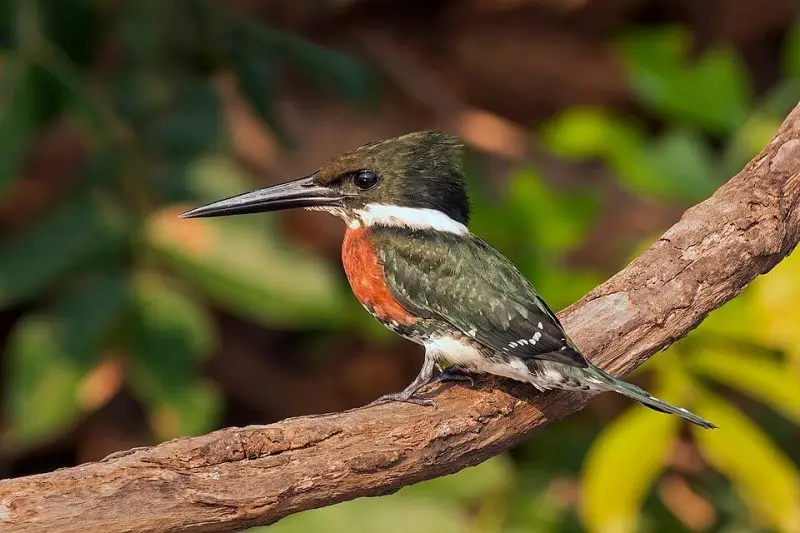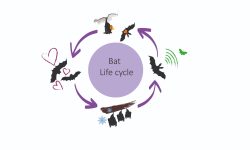Ohio’s birding scene is full of surprises—and some of the most thrilling come with a flash of color and a rattling call. While the Belted Kingfisher is a familiar sight along the state’s rivers and lakes, every now and then, something extraordinary happens: kingfishers from distant lands make an unexpected appearance. These rare, accidental visitors spark a wave of excitement among birders, offering a once-in-a-lifetime chance to witness something truly out of the ordinary. Ready to meet these surprise guests? Here are five accidental kingfishers that have turned up in Ohio—and why they’re worth watching.
What Is an Accidental Kingfisher?
Ever spotted a bird that seems completely out of place? That’s exactly what birders call an accidental or vagrant—a species that turns up far outside its normal range, often due to storms, migration mishaps, or unusual environmental shifts.
When it comes to kingfishers—birds typically found in warmer, tropical regions—seeing one in Ohio is more than rare; it’s remarkable. These surprise sightings are the kind of moments birdwatchers dream of, making every accidental kingfisher a must-see event.
1. Ringed Kingfisher (Megaceryle torquata)

Identification
The Ringed Kingfisher is the largest kingfisher species found in the Americas, measuring up to 41 cm (16 in) in length with a wingspan nearing 63 cm (25 in). It is characterized by a massive black bill, slate-blue upperparts, and striking chestnut-colored underparts that extend from its breast down to the belly. Males and females appear similar, although some regional variations exist in plumage intensity.
In flight, it reveals broad wings and a heavy, purposeful wingbeat, often accompanied by its loud, mechanical rattle-like call—a vocalization deeper and more resonant than that of the Belted Kingfisher (Megaceryle alcyon), to which it is closely related.
Why It’s Special
Native to river systems and coastal wetlands from southern Texas through Central America and into much of South America, the Ringed Kingfisher thrives in tropical and subtropical lowlands. Its presence north of its expected range—especially in the Midwestern United States—is exceptionally rare and always noteworthy.
In Ohio, sightings are considered accidental and typically follow unusual weather patterns, such as tropical storm systems or strong southerly winds during migration seasons. When one does appear, it often sparks a flurry of attention from ornithologists and birdwatchers alike, as it offers a rare opportunity to observe a Neotropical apex fisher in a temperate setting.
Its occasional vagrancy also provides researchers with insights into dispersal behavior, climate-influenced movement, and the expanding ecological flexibility of tropical bird species.
2. Amazon Kingfisher (Chloroceryle amazona)

Identification
The Amazon Kingfisher is a medium-sized member of the Chloroceryle genus, typically measuring 29–30 cm (11–12 in) in length. It sits neatly between its smaller cousin, the Green Kingfisher, and the much larger Ringed Kingfisher in both size and stature.
It is most readily identified by its glossy green upperparts, white underparts, and a broad green chest band in adult males. Females lack the solid band but may show some mottling or green spotting across the chest. The bill is long and dagger-like—well-suited for hunting small fish and aquatic invertebrates—and the legs are dark gray to black.
In flight, it is swift and direct, usually skimming low over water, and often perches quietly on low branches or snags above slow-moving rivers, lagoons, or oxbow lakes.
Why It’s Special
The Amazon Kingfisher is widely distributed throughout tropical South America, especially in and around the Amazon Basin, extending into southern Mexico and Central America. However, it is considered non-migratory, and its appearance in North America—especially beyond southern Texas—is extremely rare.
In the context of Ohio, any confirmed sighting of C. amazona would likely represent an extraordinary case of long-distance vagrancy, possibly driven by extreme weather events such as hurricanes or atmospheric shifts during seasonal migrations. Such occurrences are so rare that they often generate national attention in the birding community, drawing observers from across the region.
For ornithologists, accidental appearances of Amazon Kingfishers provide valuable insight into vagility (the capacity of organisms to move across large distances), climate-induced range shifts, and the unexpected ways in which tropical species might respond to changing environmental conditions.
From a birding perspective, spotting an Amazon Kingfisher in Ohio is the very definition of a “mega”—a birding term used for an exceptionally rare find that often becomes a once-in-a-lifetime checklist item.
3. Green Kingfisher (Chloroceryle americana)

Identification
The Green Kingfisher is the smallest of all New World kingfishers, typically measuring only 19–21 cm (7.5–8.3 in) in length, yet it is no less striking in appearance. As its name suggests, the species features a glossy dark green back, head, and wings, contrasting with its clean white underparts and short tail.
Sexual dimorphism is evident:
-
Males sport a rich rust-colored chest band, creating a vivid contrast against the white belly.
-
Females, in comparison, display two green bands across the chest—a more subdued but equally elegant plumage pattern.
The bill is proportionally long and sharply pointed, well-adapted for diving into shallow water to snatch up small fish, aquatic insects, and crustaceans. Its behavior is secretive and swift—often observed darting low over water or perched silently on overhanging branches near shaded streams or wetlands.
Why It’s Special
The Green Kingfisher’s range extends from southern Texas through Central America and into much of South America, where it thrives in quiet, slow-moving freshwater habitats. While it is relatively common along the Gulf Coast and throughout Latin America, its appearance in the interior United States is rare, and sightings in Ohio are considered extraordinary.
As a non-migratory species, the Green Kingfisher’s presence outside its established range is often linked to storm events, juvenile dispersal, or climatic anomalies. In ornithological terms, any confirmed observation in Ohio qualifies as a vagrant record, often requiring photographic or audio documentation for verification.
For birders, spotting this diminutive yet dazzling species in the Midwest is a bucket-list moment—a fleeting glimpse of a tropical gem far from home, often drawing attention from regional and even national birding communities.
From a scientific perspective, such out-of-range sightings raise questions about range flexibility, species resilience, and the ecological impact of shifting climate patterns on traditionally sedentary tropical species.
4. Pied Kingfisher (Ceryle rudis)

Identification
The Pied Kingfisher is a boldly patterned, medium-sized kingfisher, instantly recognizable by its striking black-and-white plumage, distinctive crest, and unique hovering hunting behavior. Measuring approximately 25–29 cm (10–11.4 in) in length, it features black barring across the wings and back, a white breast, and a characteristic double black breast band in males (females typically show a single, less prominent band).
Unlike most kingfishers that perch silently and dive from a fixed point, the Pied Kingfisher is known for its remarkable ability to hover mid-air—a behavior more typical of kestrels or hummingbirds. It uses this aerial tactic to pinpoint prey in clear, shallow waters before plunging head-first to snatch fish with surgical precision.
Its call is a rapid, high-pitched “chirruk-chirruk,” and it often patrols open freshwater bodies, estuaries, and even brackish coastlines.
Why It’s Special
The Pied Kingfisher boasts one of the widest ranges of any kingfisher species, spanning sub-Saharan Africa, the Indian subcontinent, and parts of Southeast Asia. However, it has no natural population in the Americas, making any appearance on this side of the globe extremely unusual.
Most records of this species outside its native range involve:
-
Escaped individuals from captivity (aviaries or private collections),
-
Or storm-displaced vagrants, particularly those originating from long-distance trade or environmental disruptions.
While there is no verified wild population of Ceryle rudis in North America, isolated reports have surfaced over the decades—often surrounded by intense scrutiny and excitement within the ornithological community.
A confirmed sighting of a Pied Kingfisher in Ohio would be nothing short of extraordinary, bordering on the realm of the improbable but not entirely impossible. Such a sighting would almost certainly be subject to formal review by bird record committees and would attract both regional and international attention.
From a scientific perspective, these rare events pose fascinating questions regarding:
-
Long-distance vagrancy in non-migratory birds,
-
Human-assisted dispersal, and
-
The implications of the exotic pet trade on local avifauna records.
For birders, spotting a Pied Kingfisher in the wilds of Ohio would be the kind of discovery that makes headlines—and possibly history.
5. Collared Kingfisher (Todiramphus chloris)

Identification
The Collared Kingfisher is a visually stunning bird, best known for its vivid blue-green upperparts, snow-white underparts, and the namesake white “collar” that wraps around its neck and throat. Measuring 23–26 cm (9–10 in) in length, it features a robust, slightly flattened bill, pale legs, and a relatively short tail.
Its plumage can vary subtly depending on geographic region—some subspecies exhibit turquoise or teal shades, while others may appear more emerald or cobalt. These regional variations reflect the species’ wide distribution and ecological adaptability.
Often found perched upright on exposed branches, fence posts, or even power lines near coastlines, mangroves, and estuaries, the Collared Kingfisher hunts insects, small crabs, reptiles, and occasionally fish. Its vocalizations include sharp, repeated “kek-kek-kek” calls that can echo across open landscapes.
Why It’s Special
The Collared Kingfisher is native to a vast area that includes Southeast Asia, the Philippines, northern Australia, and many Pacific Islands, making it one of the most geographically widespread species within the kingfisher family (Alcedinidae). Despite this, it is entirely absent from the Americas—and especially from temperate inland regions like Ohio.
However, there have been rare and scattered reports of this species far outside its native range, primarily attributed to:
-
Escaped birds from aviaries or private collections,
-
Or storm-driven vagrants carried by typhoons or other severe tropical systems.
Though a wild Collared Kingfisher in Ohio remains highly improbable, such an event is not outside the realm of possibility, especially as global weather patterns continue to shift and exotic pet trade dynamics evolve.
For birders, the mere possibility of encountering Todiramphus chloris in the Western Hemisphere adds an extra layer of excitement and vigilance to coastal or migratory hotspot observations. For scientists, such sightings raise critical questions about:
-
Avian range anomalies,
-
Human-mediated species introductions, and
-
The limits of ecological resilience in displaced individuals.
In short, while the Collared Kingfisher is an almost mythical prospect in Ohio, its bright flash of turquoise and echoing calls remain an ever-enticing possibility for the most optimistic—and observant—birders.
Tips for Spotting Rare Kingfishers in Ohio
1. Stay Near Water
Kingfishers are obligate aquatic hunters, meaning their survival depends heavily on proximity to water. Whether it’s a quiet forest stream, a broad river, or an urban pond, these birds rely on clear, shallow water to spot and catch prey—typically small fish, aquatic insects, and crustaceans.
To maximize your chances of spotting both native and vagrant kingfisher species, focus your search on:
-
Slow-moving or still bodies of water, such as oxbow lakes, marshes, and reservoirs
-
Natural perches like overhanging branches, exposed roots, or reed clusters near water edges
-
Migration corridors—especially in spring and fall—when accidental or wind-blown species may stop to rest and feed
Early mornings and late afternoons are particularly productive times, as kingfishers tend to be most active during these cooler parts of the day. Use binoculars to scan quietly from a distance, and listen for their distinctive rattling calls, which can alert you to their presence even before you see them.
Remember: if there’s water, there could be a kingfisher—maybe even one that doesn’t belong there.
2. Use eBird and Birding Apps
In today’s digital age, staying connected to the latest bird sightings is easier than ever—and eBird is the gold standard for real-time birdwatching data. This global citizen-science platform aggregates millions of observations, allowing you to track rare and accidental kingfisher appearances in Ohio and beyond.
By regularly checking eBird’s recent sightings and hotspot maps, you can:
-
Quickly learn about new or unusual kingfisher reports
-
Plan your outings based on up-to-date information
-
Connect with local birders who share tips and updates
Additionally, popular birding apps like Merlin Bird ID, BirdNET, and iNaturalist provide tools to help you identify birds on the spot, record your observations, and even get automatic alerts for rare species in your area.
Accidental kingfishers often make headlines within these communities, so tapping into these digital resources can give you a crucial edge—turning a chance encounter into a purposeful chase.
3. Join Local Birding Groups
Connecting with local birding communities is one of the most effective ways to stay informed about rare and accidental kingfisher sightings in Ohio. Organizations such as the Ohio Ornithological Society and regional Audubon chapters maintain active networks of passionate birders who share timely reports, photographs, and tips.
By becoming a member or participating in their events, you can:
-
Receive instant alerts about unusual or rare bird appearances
-
Join guided walks, field trips, and workshops led by experienced ornithologists
-
Access exclusive mailing lists, forums, and social media groups where members discuss recent sightings in detail
These groups not only help you find rare kingfishers but also offer invaluable opportunities to deepen your knowledge, hone your identification skills, and build friendships with fellow enthusiasts. In a way, being part of a local birding group turns the thrill of birdwatching into a shared adventure—and increases your chances of witnessing those surprise guests in Ohio’s skies.
4. Carry the Right Gear
Having the proper equipment is essential for successfully spotting and documenting rare kingfishers in the wild. A high-quality pair of binoculars with good magnification (8x to 10x) and a wide field of view will help you spot these elusive birds from a distance without disturbing them.
A comprehensive field guide—whether printed or digital—allows you to quickly compare key identification features like plumage patterns, size, and calls, which is especially crucial when differentiating between similar kingfisher species.
Additionally, a camera with a telephoto lens (at least 300mm) can be invaluable for capturing detailed images. Photographs not only aid in verifying your sighting but also contribute valuable data for bird records and scientific research. Many birders also use smartphone camera adapters or dedicated spotting scopes for sharper, close-up images.
Remember, patience and preparedness are key: being ready to document your observation can turn a fleeting glimpse into a lasting scientific record—and a memorable personal achievement.
Final Thoughts
While Ohio’s waterways are most often graced by the familiar Belted Kingfisher, the rare appearance of accidental kingfishers transforms ordinary birdwatching into a thrilling adventure. These unexpected visitors not only enrich the local avian diversity but also remind us of nature’s unpredictability and wonder.
Whether you’re an experienced birder or just beginning your journey, staying vigilant along rivers, lakes, and wetlands can lead to unforgettable encounters with these elusive travelers. So keep your binoculars ready, your ears tuned to their distinctive calls, and your spirit open to the surprises that Ohio’s skies and waters have in store.
After all, in birdwatching, it’s often the rarest sightings that create the most lasting memories.






